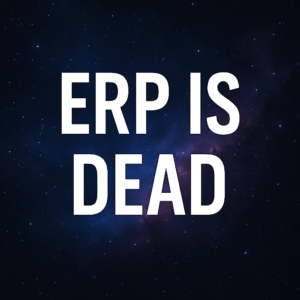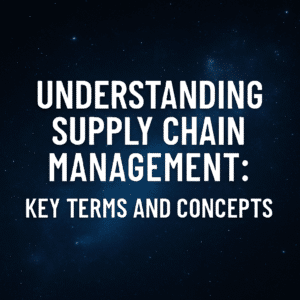Regardless of the type, embarking on digital transformation implicates some significant impacts on organizations. These impacts follow some common patterns in how organizations are affected by any business transformation. Below I cover the top 10 outcomes that companies often experience in terms of change impacts during transformation.
Change impacts in organizations related to their digital transformation are a serious matter that expands beyond simply implementing new technologies. A transformation involves changing the operating model, people, and culture. Moreover, the changes are significant and may feel unpredictable, but they follow foreseeable patterns. Leveraging our experience in helping clients through a digital transformation, we have packaged these trends in the top ten list below.
Table of Contents
Toggle10. New Technology
The most obvious and least important aspect of change impact is employees using new technologies and tools. It might sound like a big deal, but this is the least of their worries. However, it should still be considered as part of the training and communications to ensure the employees’ adaptation to the new technology. Yet, effectively addressing this change might be nearly impossible to accomplish without addressing the other nine impacts first.
9. Technical Infrastructure
Number nine on our list is associated to the technical infrastructure. Many organizations in the process of migrating from an on-premise solution to the cloud will influence their overall infrastructure. Therefore, instead of needing to have a big data center equipped with a lot of different servers taking up space, money, and capital investments, they shift to the cloud and allow cloud solutions to host their systems and data.
Having said that, not all organizations going through digital transformation are necessarily going to make that shift to the cloud. No matter the shift the infrastructure will still be affected, as you go through important upgrades of your server, hardware, and foundation to support the technology going forward. That is the reason why the impact on the technical infrastructure is number nine on our list.
8. IT Skills
Number eight is the need for new IT skills. Implementing new technologies means that your internal IT department will need to develop different skills because now you will have to integrate with other systems. You might either already have the right staff in place that simply require upskilling and training, or you might need to hire other people and bring in outside fresh blood into the organization to provide that competency.

7. New Reporting Relationships
Another human impact is the implementation of new reporting relationships or modified reporting relationships. Digital transformations offer an opportunity to rethink how your organization is structured.
Along those lines, if you are moving to a shared service model where you will consolidate or centralize things like HR, accounting, or IT, this will require new reporting relationships. Which might seem to have nothing to do with technology or digital transformation, but trust me it does!
6. Different Business Processes
Number six on our list is different business processes. A digital transformation that is done correctly means that you will not just automate the workflows and processes, but instead consider a new ways to optimize business processes for more efficient and effective operations. This requires some deliberate thought around improving the business processes, enabling potential improvements, and aligning your business processes with your overall corporate and business strategy.
5. End-to-End Integration
Another impact similar to the business process is the fact that now you have more end-to-end integration across your enterprise. Instead of operating in silos, you have integrated workflows and data flows between different departments, functions, and locations within your organization. Those end-to-end processes affect people in a very different and significant way, because now that we operate in the context of an end-to-end business process. Everything is affected by actions happening upstream and downstream.
This requires extensive change management and needs to be well understood by people in your organization. In addition, the staff needs to be taught and work through how their contributions to the end-to-end processes. Therefore, that is very important to capture and address these changes or upgrades as part of your change strategy in the overall digital transformation plan.

4. New Roles & Responsibilities
Digital transformation also results in new roles and responsibilities that can be very impactful across the entire organization. For example, you are implementing in human capital management or HR technology that involves self-service, you have taken the responsibility away from HR of entering benefits paperwork into the system. Now, employees will be completing this task themselves and that frees HR time to do other matters that company leadership will need to establish.
Certainly, if you are beginning a digital transformation, you want to make sure that you have a good understanding of what those impacts are because they can be very broad. If you are doing an ERP implementation or some sort of crossover technology that affects your entire organization, make sure you are thinking about those end-to-end processes. These transitions will absolutely have a material impact on your organization as part of your digital transformation.
3. Different Customer Experience
An important stakeholder that oftentimes gets overlooked in digital transformation is your customer experience. We are often focused on how to improve the internal processes’ efficiency, but we also have to think about how customers are affected.
For example, during the pandemic in 2020, we found that many organizations were forced into this e-commerce business model of interaction, providing products, and services to customers via digitization. Not because of need, but because they were forced to.
It is very crucial to focus on the customer experience to understand and articulate the customer priorities to your business community. This communication will allow for alignment behind the approach of how to enable a better customer experience. But also, it will allow you to utilize it as part of your value proposition to your customers as well.

2. New Business Models
Number two on our list is the new business models, which carriers a very significant impact. If you are implementing technology simply to automate processes, you probably will not get as much value as you should be getting. Today’s technology has the potential to completely disrupt and transform your business model, like in introducing the employee self-service or interacting with your customers differently through e-commerce.
Another example is, if you use machine learning and artificial intelligence. These emerging technologies will completely transform the way you do business. It will give you a leg up on how you use data, predict consumer behavior, or future strategies through new analytics. That is a change to your business model that should be considered. Thus, this is why the new business model is number two on our list.
1. Culture
The biggest impact that most organizations experience as a result of a digital transformation is the overall culture. Now, this critical aspect is often overlooked by transformation leaders, which is a monumental mistake. All the other nine impacts trace back to culture, whether it is a new business model, end-to-end process integration, new roles, and responsibilities, or whatever the case may be, they all affect culture, and culture should be affecting them back.
A real client example: A midsize organization that is growing very quickly through acquisition and organic growth. They use to be a gun-slinging entrepreneurial culture, but now they need to grow up and start acting like a real company, a mature organization. That is a very significant cultural shift that oftentimes is driven by digital technologies. However, digital technologies are not enough without a change strategy that addresses the transition of a cowboy culture or capturing of tribal knowledge.
As another example, a type of organization that we commonly see is that gun-slinging organization that relies on tribal knowledge and heroics to get work done every day. If digital transformation is meant to standardize processes and create a more repeatable, scalable business process that can grow and adapt to change, that is a big cultural shift. This is a particularly hard cultural shift because people take pride in a culture of heroics and use it to establish value in their role. This change will need to be considered and recognition will need to be shifted from creating results through innovation to establishing scalable processes.
Understanding what we want our culture to be is very important. Having a clear cultural and change strategy to help us reach the goal is necessary. Without it, the other nine impacts will be disruptive.
Resources
For more information on how your organization is likely to be impacted by digital transformation, I encourage you to check out our Guide to Organizational Change Management that will provide some resources and best practices during your digital transformation.
I hope you found this information useful and if you have questions regarding change impacts during digital transformation or change management strategies, please don’t hesitate to reach out to me directly. I am happy to be an informal sounding board as you move through your digital transformation journey.






